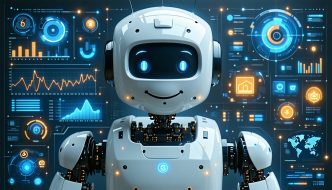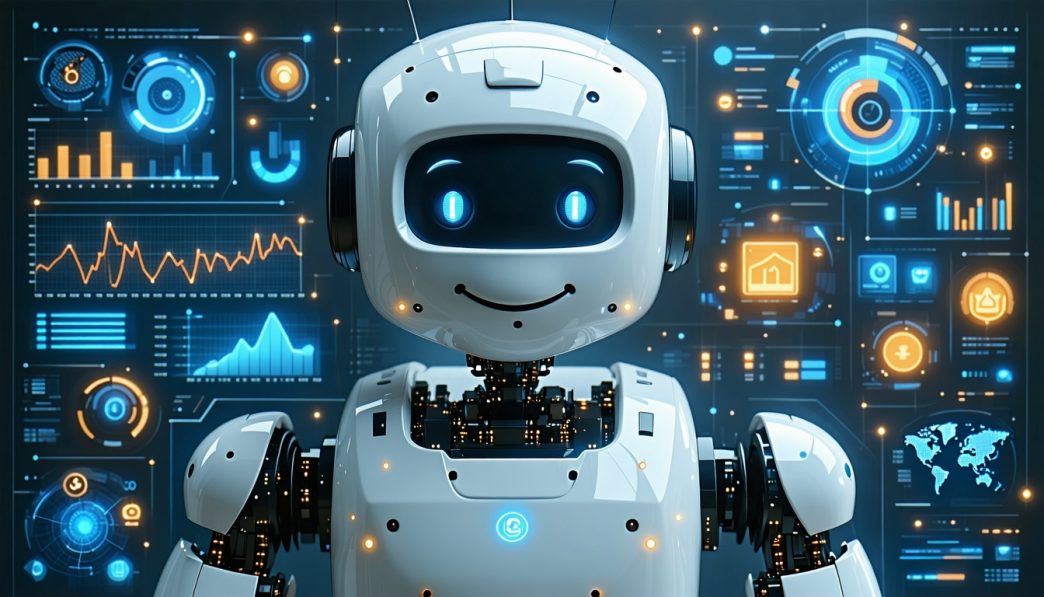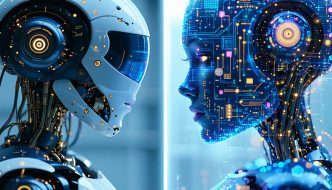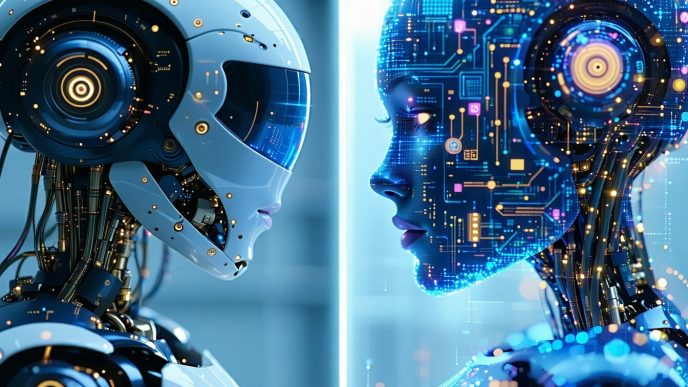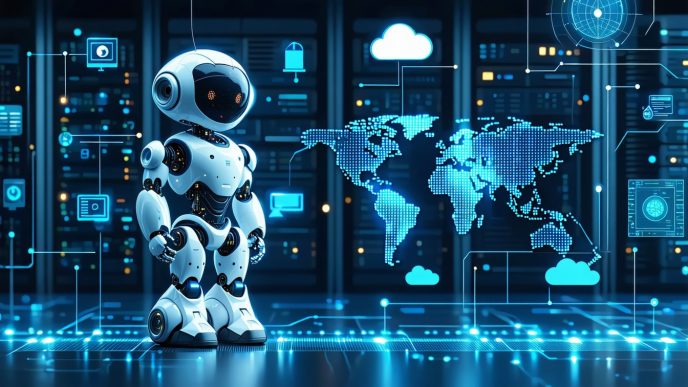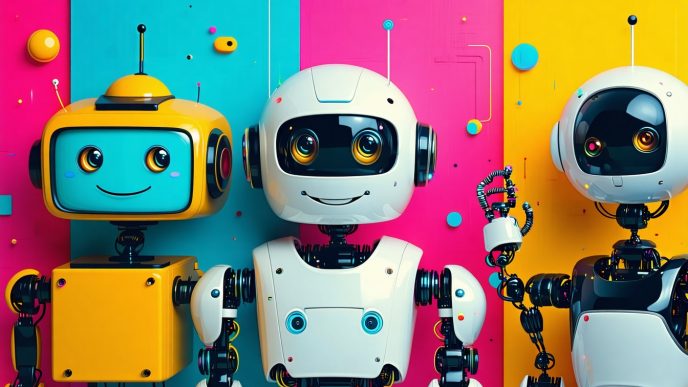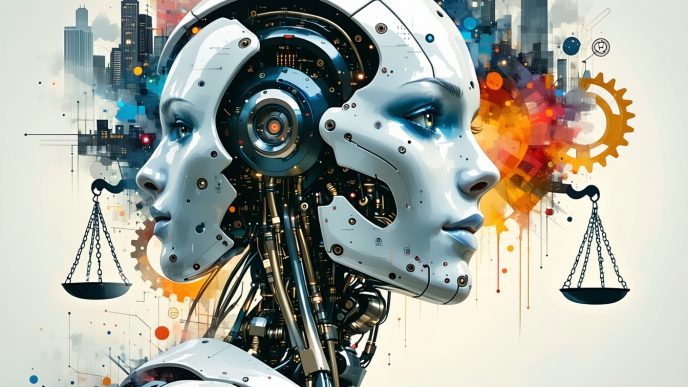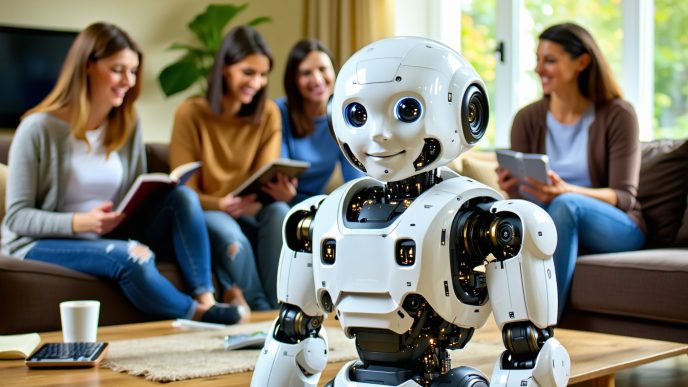The Evolution of Robotics
The journey of robotics has significantly transformed over the past few decades, leading to the emergence of humanoid robots capable of performing complex tasks and interacting with humans. Understanding the evolution of these machines provides insights into their capabilities and applications today.
Introduction to Humanoid Robots
Humanoid robots are designed to replicate human form and behavior, allowing for more natural interactions with people. These robots are engineered with human-like features, including heads, arms, and legs, and are equipped with advanced technologies that enable them to move, speak, and express emotions.
In recent years, advancements in artificial intelligence have allowed humanoid robots to exhibit more autonomous behavior. These robots can now navigate environments and respond to verbal and non-verbal cues from users, facilitating more meaningful connections. For a deeper understanding of the advancements occurring in this field, one can refer to the AI models in humanoid robots.
The Advancements in Robot Technology
Technological progress in robotics has been driven by innovations in hardware and software. Key advancements include enhanced mobility, improved sensors, and sophisticated algorithms that enable emotion recognition in robots. These technologies allow humanoid robots to better interpret human emotions through facial expressions and vocal tones.
| Technology | Description | Impact on Humanoid Robots |
|---|---|---|
| Advanced Sensors | Enables real-time data collection of surroundings | Improves interaction and navigation capabilities |
| AI Algorithms | Machine learning and deep learning techniques | Enhances emotion recognition and decision-making |
| Robotic Locomotion | Innovative movement mechanisms allowing agility and balance | Facilitates complex movements similar to humans |
The integration of these advancements allows humanoid robots to perform a range of functions, from providing companionship to assisting in healthcare settings. Their applications are expanding and paving the way for future developments. For more on specific applications in healthcare, see humanoid robots in healthcare.
As robotics technology continues to advance, emotion recognition in robots becomes a critical focus area, enhancing their ability to understand and respond to human emotions effectively. This capability is essential for developing robots that can communicate effectively and empathetically with people.
Emotion Recognition in Robots
Emotion recognition plays a pivotal role in the development and functionality of humanoid robots. By enabling robots to understand and respond to human emotions, they can improve interactions and deliver more personalized experiences.
Importance of Emotion Recognition
Understanding emotional cues is essential for various applications of humanoid robots. Emotion recognition allows robots to interact more naturally and effectively, enhancing their capabilities in settings such as healthcare and customer service. Robots that can recognize emotions can offer support, provide companionship, and respond appropriately to individuals’ needs.
The benefits of emotion recognition can be captured in the following table:
| Application | Benefits of Emotion Recognition |
|---|---|
| Healthcare | Improved patient care and emotional support |
| Customer Service | Enhanced customer satisfaction and engagement |
| Education | Increased motivation and better learning environments |
By interpreting emotions accurately, robots can significantly impact the quality of service provided in these domains. This capability opens the door for more empathetic responses from machines, fostering a connection between humans and robots.
Challenges in Teaching Robots to Read Facial Expressions
Despite advancements in technology, teaching robots to accurately read facial expressions poses significant challenges. One major issue is the variability of human emotions. Facial expressions can differ greatly between individuals and cultures, making it difficult for robots to generalize emotional cues accurately.
Additionally, factors like lighting conditions, angles, and the presence of obstructions can interfere with a robot’s ability to interpret facial expressions correctly. These challenges can lead to inconsistencies in emotion detection.
The complexities involved in teaching robots to understand emotions are outlined in the table below:
| Challenge | Description |
|---|---|
| Variability of Expressions | Diverse interpretations of emotions among individuals |
| Environmental Factors | Lighting and angles affecting visibility |
| Contextual Understanding | Difficulty in grasping the context behind the emotions displayed |
Efforts to enhance robot emotion recognition continue, utilizing advancements in machine learning and artificial intelligence. As robots become more adept at understanding human emotions, their applications and effectiveness will broaden significantly, further emphasizing the importance of addressing these challenges. For insights into various humanoid robots and their applications, explore articles on humanoid robots in healthcare and humanoid robots for education.
Facial Expression Analysis
Understanding how robots interpret facial expressions is essential for advancing emotion recognition technology. This process involves the analysis of various facial features and their movements to identify human emotions accurately.
How Robots Interpret Facial Expressions
Robots employ a combination of computer vision techniques and machine learning models to analyze facial expressions. The process typically includes several steps:
- Facial Detection: Robots first identify and locate a face using algorithms that can detect facial features.
- Feature Extraction: Key landmarks, such as the eyes, nose, and mouth, are pinpointed. These features are crucial for determining expressions.
- Expression Classification: Using trained algorithms, robots classify the detected facial expressions into specific emotions, such as happiness, sadness, anger, or surprise.
The following table illustrates the common expressions and their meanings as identified by robots:
| Facial Expression | Emotion |
|---|---|
| Smile | Happiness |
| Frown | Sadness |
| Eyebrows Raised | Surprise |
| Brows Furrowed | Anger |
Technologies Utilized for Emotion Detection
Several technologies play a significant role in enabling robots to read and interpret facial expressions. These include:
- Machine Learning Models: These algorithms are designed to learn from vast datasets of facial expressions, improving their accuracy over time.
- Computer Vision: This technology helps in visually analyzing the images captured by the robot’s camera, enabling the detection and recognition of faces.
- Infrared Cameras: Used in some advanced robots, these cameras can detect subtle changes in facial temperature and expressions not visible to the naked eye.
The combination of these technologies enhances the robot’s ability to understand human emotions effectively. For more on how robots function within human environments, explore our article on humanoid robots for home use. Integrating emotion recognition into humanoid robots can significantly enhance interactions in various settings, from healthcare to customer service.
Applications of Emotion Recognition
The integration of emotion recognition in robots has the potential to transform various sectors. This capability allows robots to engage with humans more effectively, enhancing the user experience. Here are key areas where emotion recognition is making an impact.
Healthcare Sector
In the healthcare field, robots equipped with emotion recognition technology can assist medical professionals and patients alike. These robots can evaluate patient emotions, helping healthcare providers to tailor their responses accordingly. For example, a robot that identifies signs of anxiety in a patient can alert a healthcare worker to provide additional support or comfort.
| Application | Benefits |
|---|---|
| Patient Monitoring | Detects emotional state for better care |
| Assisted Living | Provides companionship to reduce loneliness |
| Therapy Robots | Offers support to individuals with mental health issues |
For more insights into the role of humanoid robots in healthcare, refer to our article on humanoid robots in healthcare.
Customer Service Industry
Emotion recognition technology is also reshaping the customer service industry. Robots that can read customer emotions can create personalized interactions and respond more effectively to client needs. For instance, a robot may identify frustration in a customer’s voice or facial expression and proactively offer solutions or escalate the issue to a human representative.
| Application | Benefits |
|---|---|
| Interactive Kiosks | Enhances user experience by adapting responses |
| Call Centers | Filters urgent concerns based on emotional cues |
| Retail | Adjusts sales techniques to match customer emotions |
Explore more about the intersection of humanoid robots and customer service in our article on humanoid robots for daily chores.
Education and Training
In education, robots that recognize emotions can adapt teaching methods according to student engagement and understanding. For instance, these robots can identify when a student is confused or bored, making it possible to adjust the lesson accordingly.
| Application | Benefits |
|---|---|
| Tutoring Systems | Provides personalized feedback based on emotional responses |
| Classroom Assistants | Maintains a positive learning environment |
| Virtual Learning | Engages students through emotional feedback |
For further details on the role of robots in education, check out our article on humanoid robots for education.
Emotion recognition in robots offers numerous possibilities across various sectors. As technology advances, these capabilities will continue to evolve, enhancing interactions between humans and machines.
Ethical Considerations
As humanoid robots increasingly integrate emotion recognition abilities, several ethical concerns have arisen. These concerns primarily focus on privacy issues and biases that may affect the accuracy of emotion recognition.
Privacy Concerns
One of the foremost ethical issues surrounding emotion recognition in robots is privacy. As these machines become capable of analyzing facial expressions and interpreting human emotions, the potential for infringing on personal privacy increases. Data collection methods raise concerns about consent and the management of sensitive information.
| Aspect | Concern Level |
|---|---|
| Data Collection | High |
| Consent Issues | High |
| Security of Personal Information | Medium |
The deployment of robots equipped with emotion recognition technology in public spaces, such as shopping centers and airports, can lead to unauthorized surveillance. Individuals may not be aware that their emotional data is being collected, leading to calls for clearer regulations on how such data is used and protected. For more insights, view our article on humanoid robots and privacy.
Bias in Emotion Recognition Algorithms
Another significant ethical consideration is bias in emotion recognition algorithms. These algorithms are often trained on specific datasets that may not represent the diversity of human emotions across different cultures and demographics. As a result, robots may misinterpret or fail to accurately recognize emotions in individuals outside these datasets.
| Bias Type | Example |
|---|---|
| Cultural Bias | Misinterpretation of emotions based on cultural expressions |
| Gender Bias | Differences in reading emotional cues based on gender stereotypes |
This bias can lead to ineffective interactions, reinforcing stereotypes and potentially causing harm. Addressing these biases requires ongoing research and diverse dataset inclusion to improve the accuracy of emotion recognition in robots. For further exploration of robot ethics, refer to our article on robot emotions and ethics.
Efforts must be made to ensure that as robots evolve and integrate advanced technologies, ethical considerations are prioritized to build trust and improve interactions with humans. Understanding these implications is critical as society adapts to the presence of increasingly intelligent humanoid robots.
Future Prospects
Improving Accuracy in Emotion Recognition
The field of emotion recognition in robots is continually evolving. To enhance the accuracy of these systems, researchers focus on refining algorithms that can analyze facial expressions and vocal cues effectively. Current methods utilize machine learning techniques to process vast amounts of data, thus improving the robot’s ability to interpret human emotions accurately.
Factors that influence the effectiveness of emotion recognition include:
| Factor | Description |
|---|---|
| Data Quality | Higher quality and varied data improve learning. |
| Algorithm Efficiency | More sophisticated algorithms enhance accuracy. |
| Sensor Technology | Advanced sensors capture better data for interpretation. |
| Real-Time Processing | Faster processing enables immediate responses. |
Combining these elements can lead to a significant improvement in the robots’ abilities to recognize and respond to human emotions. Enhanced accuracy would make humanoid robots more reliable in various applications, including healthcare, education, and customer service.
Potential Impact on Society
The advancement of emotion recognition in robots holds various implications for society. As robots become more adept at interpreting human emotions, they can significantly impact several fields:
| Field | Potential Impact |
|---|---|
| Healthcare | Emotionally responsive robots could aid in patient care, providing companionship and emotional support, particularly in elder care and rehabilitation. Learn more in our article on humanoid robots in healthcare. |
| Education | Robots with emotion recognition can create more tailored learning experiences, responding to student moods and engagement levels. See our discussions on humanoid robots for education for examples. |
| Customer Service | Robots capable of interpreting customer emotions can provide better service, enhancing user satisfaction and engagement in various industries. |
While the potential for positive impacts is vast, ethical considerations must also be addressed, particularly concerning privacy and algorithmic bias. For further insights on ethical implications, refer to our article on robot emotions and ethics.
Ultimately, as humanoid robots advance in their ability to recognize emotions, society will likely see a transformative integration of these technologies into daily life, enhancing interactions between humans and machines in profound ways.
